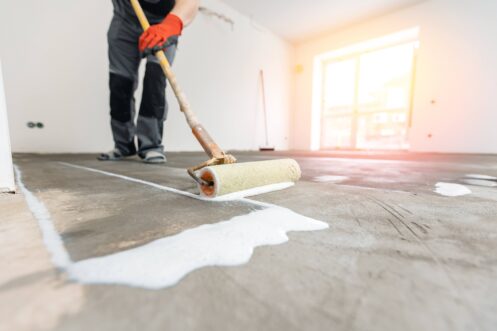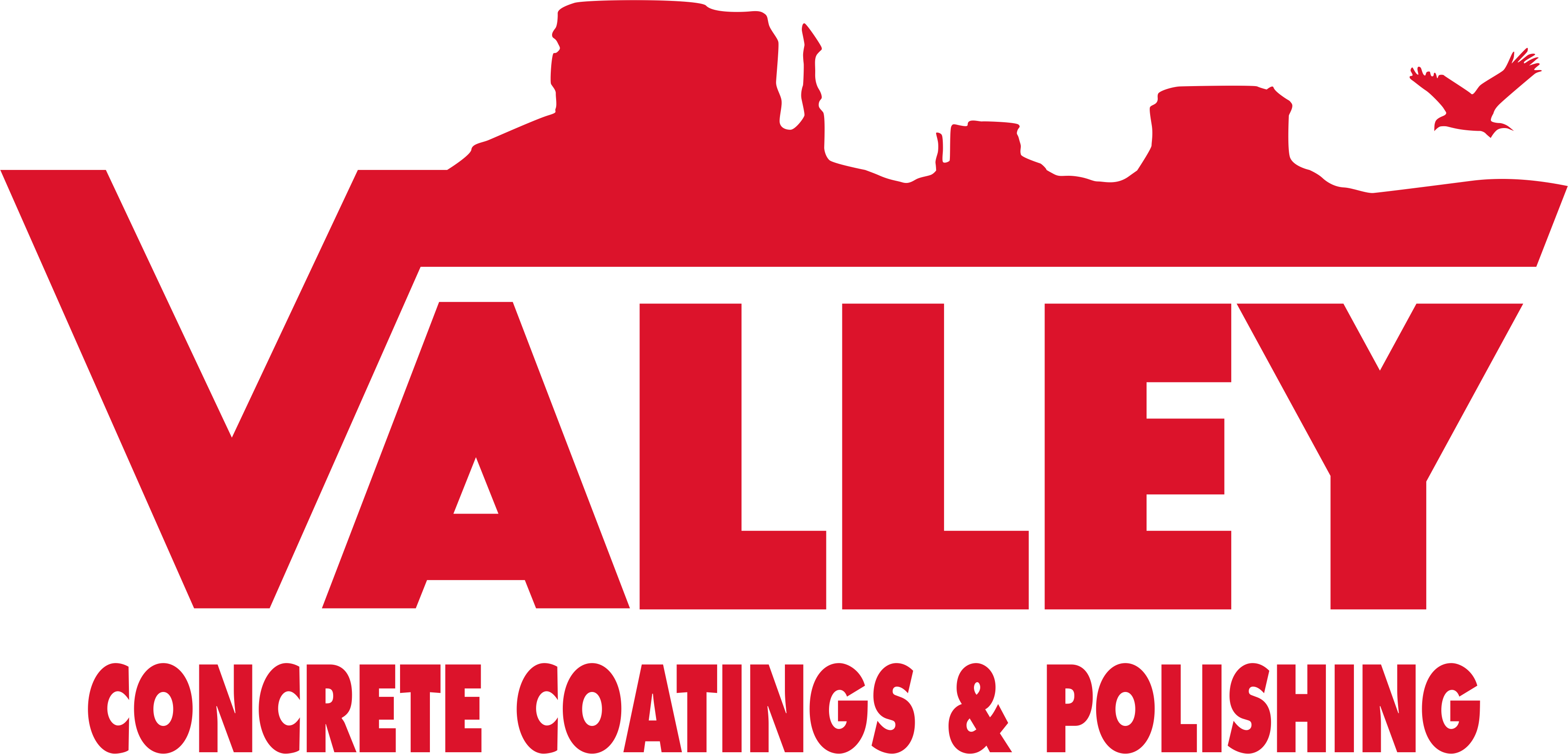
Concrete floor coatings turn a standard concrete floor into a durable and aesthetically pleasing addition to your home or garage. However, getting the most from your coating requires preparation before you start pouring and spreading the coating. This guide explores why surface preparation is so important before installing a floor coating and what it entails.
Why Proper Surface Preparation Matters
If you’re going to get the most from your investment in a floor coating, it’s imperative to prepare the flooring. Preparation makes it look the best, gives you better performance, and gives you the longest service life.
Aesthetics
When you invest in coating a concrete floor, part of the goal is that the floor in your garage, basement, shed or barn that’s pleasing to the eyes. However, if you don’t take the time to prepare your floor before coating it, you may have blemishes that’ll bug you for years. Flaws in the concrete, existing stains, and material hardened to the floor may show through the coating.
Better Performance
Beyond aesthetics, you want to know your floor will function well. For floor coatings, this can mean being smooth, having extra traction, protecting the underlying floor, providing chemical resistance and adding to the overall safety of the floor. Defects and stains in the floor can interact with the coating, causing it to not adhere properly. It can cause the coating to break down, chip, bubble, or flake. When any of these things happen, it impedes all of the benefits a coating offers.
Longer Coating Life
Depending on the coating you apply to your concrete floor, you can generally expect them to last from 3-5 years for low-end epoxy coatings to 15 years or more for higher-end polyurea or polyaspartic coatings. However, failing to properly prepare your floor can cause poor adherence, chipping and cracking, all of which increase the risk of further damage and shorten the life of the coating.
Current Floor Assessment
Before you can start preparing your floor, you need to assess its current condition. This includes evaluating its moisture content, whether a curing compound was used, and any oil or grease deposits it may have collected.
Moisture
Like water and oil, water and concrete coatings do not mix well. When it’s first installed, concrete contains moisture that evaporates as it cures. Further, the ground under the concrete can continue providing moisture to the concrete, preventing it from fully drying out. When a concrete coating is applied to flooring that has too much moisture, regardless of the source, it can cause the coating to bubble up rather than adhere flat and smooth. For that reason, one of the first things a coating installer should do is evaluate the amount of moisture the concrete still has at the surface to ensure it won’t interfere with applying the coating effectively.
Curing Compound
When installing concrete, sometimes a curing compound is added to accelerate the curing process. This is applied on top of concrete after it’s poured. However, this compound can interfere with certain floor coatings. If your installation company finds a curing compound, they’ll have to remove it using a pressure washer. However, it must be done skillfully to prevent damage to the concrete itself and needing further repair.
Oil and Grease Deposit
Finally, the floor should be evaluated for oil and grease deposits. In settings like a garage or shed, these deposits may be more obvious due to their color. However, there may also be deposits that aren’t as noticeable. It’s important to resolve these before applying any kind of coating. These deposits can bleed through the coating and become an eyesore along with interfering with the coating’s ability to adhere to the concrete. They can also damage the integrity of the concrete, causing it to deteriorate even after the coating is applied.
Several tests can be used to identify grease and oil deposits. The easiest is the water test, which simply uses a thin application of water to identify possible problem areas. A trained professional can use muriatic acid to test an area. Muriatic acid reacts with concrete, so if there’s no reaction then contaminants are present. They can also use a heat lamp or pH testing to identify areas needing treatment.
Stripping Previous Coatings
Before applying a new floor coating, it’s critical to strip any previous costings from the floor. Old coatings can prevent the new coating from adhering or curing properly. Damage to old coatings can turn into blemishes and damage to new coatings.
There are two primary ways to strip coating from a concrete floor. What most people think of when they hear stripping is using a chemical to remove the coating. Even after applying the chemical stripper, it requires some mechanical work to remove it from the floor. Additionally, there are intense mechanical stripping techniques that include sandblasting, bead blasting, diamond grinding, and sanding. Depending on the type of coating, it may require a combination of the two.
Deep Cleaning
Once you have the previous coating removed, you need to deep clean the floor. The goal is to remove all loose and hardened debris from the area so that the new coating can adhere well. It should start with general cleaning like sweeping and mopping. Depending on the stains on the concrete, it may require deeper cleaning to get out crease and oil. Anything hardened to the floor may require scraping or sanding to get it out.
Repair
Next, you need to repair any defects in the concrete. This may include patching cracks and chips. Depending on the cause of the crack, you may need to have some leveling work completed. Chips and cracks can be repaired using a little fresh concrete. Depending on the level of damage, you may need to remove some of the damaged concrete and pour a new section. Leveling is completed by drilling a hole through the concrete and pumping in a leveling compound.
Sometimes the concrete has sustained damage from oils and grease that makes it less dense than it was previously. This may require a densifying liquid to help strengthen the concrete before applying the coating.
Texture Preparation
Finally, you may need to prepare the surface of the flooring. The surface texture needed depends on the kind of coating you’re installing. In most cases, the coating requires some texture for the coating to adhere. However, depending on the goal of the floor, it may require deeper, speckled or other texture finishes. Your coating team will help you determine what texture will suit your application goals and coating type.
Homeowners around Phoenix have turned to Valley Concrete Coatings & Polishing for award-winning flooring options for the last 20 years. Our team specializes in epoxy and metallic epoxy flooring, floor polishing, concrete flooring, concrete staining and acrylic overlay. Call to schedule a consultation with one of our flooring experts to evaluate your current flooring and discuss what flooring may be appropriate for your application.










